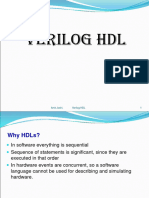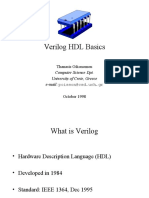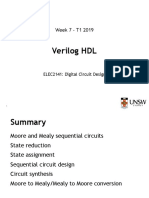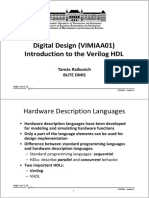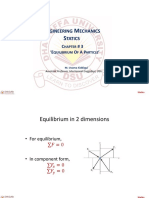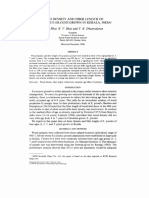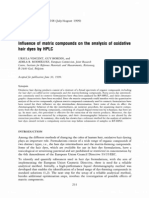0% found this document useful (0 votes)
38 views52 pagesVerilog Basics
- Verilog is a hardware description language used to model digital circuits
- It allows modeling at different levels of abstraction like behavioral, register transfer level, and gate level
- Modules can contain other modules to model hierarchical designs
Uploaded by
8885684828Copyright
© © All Rights Reserved
We take content rights seriously. If you suspect this is your content, claim it here.
Available Formats
Download as PPT, PDF, TXT or read online on Scribd
0% found this document useful (0 votes)
38 views52 pagesVerilog Basics
- Verilog is a hardware description language used to model digital circuits
- It allows modeling at different levels of abstraction like behavioral, register transfer level, and gate level
- Modules can contain other modules to model hierarchical designs
Uploaded by
8885684828Copyright
© © All Rights Reserved
We take content rights seriously. If you suspect this is your content, claim it here.
Available Formats
Download as PPT, PDF, TXT or read online on Scribd
/ 52






